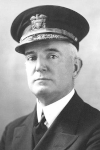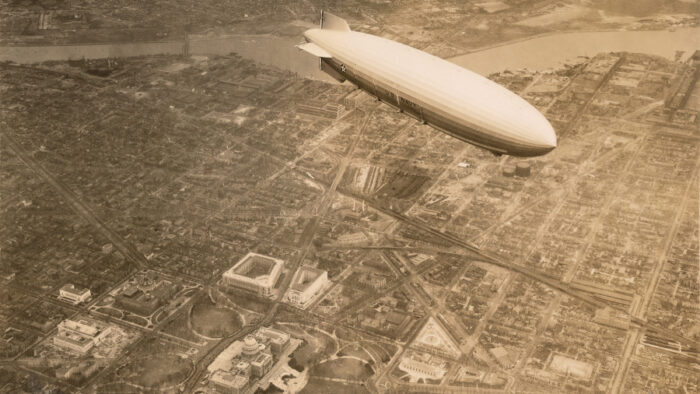
[I often will write my articles well in advance, whenever I have time, so this article was written before the events of January 6. It goes out to those, like me, who take refuge in the past, while hoping for a better future]
Franklin Delano Roosevelt, by dint of his four elections, managed a number of ‘firsts,’ ‘mosts’ and ‘onlys’ in his long career, though one of his mosts he has to share with one other President: The number of times that he took the oath of office. Anyone want to guess who also took it four times?
Anyway, the inaugurations proceeded in much the way his predecessors had decided – on the east portico of the Capitol.
The first inauguration, celebrated under the pall of the Great Depression and appropriately cloudy weather, took place as before: March 4, on the East Front of the Capitol. Really the only element that deviated from the ordinary was an overhead visitor: The USS Akron. Built between 1929 and 1931 by the Goodyear-Zeppelin Corporation in Akron, Ohio, this giant of the air continues to be the largest helium-filled airship of all time.
At the time of the inauguration, she was stationed in Lakehurst New Jersey, and it was there that she set off about midnight on the 4th to join up with some 100 other planes from the Army, Navy and Marines and even one Army non-rigid airship. The Washington Evening Star apparently got their correspondent on board, as the following day, they reported that, even as the other planes were already in position:
The Akron still idled along miles to the East, but was now “pouring on the coal” and heading toward the Capitol dome.
The Capitol was sliding by below and only by gaining a higher foothold in the bomb-bay and leaning out over the side of the fuselage could the Avenue, with its marching thousands and its banks of crowded spectators, be seen at all.
The marchers looked like nothing so much as patches of tiny beads. Square, sharply aligned blocks of beads of a brownish hue showed where marched the Army, earth-bound comrades in arms of these leather-encased begoggled soldiers of the sky, hunched in quivering cockpits.

At exactly three o’clock, the great airship passed directly over the viewing stand at the White House. The Washington Post’s earth-bound reporter ended his article the following day:
On the Akron, it was pointed out to President and Mrs. Roosevelt, was the chief of the Bureau of Naval Aeronautics, Admiral William A. Moffett, who was first appointed to that post by Woodrow Wilson.
Roosevelt’s following inaugurations did not have such overflights, not the least because the Akron crashed in a thunderstorm less than a month after the inauguration, spelling the beginning of the end of the Army’s rigid airship program.
What did make the second inauguration special was that it was the first time that it was held on January 20t. Roosevelt had felt that the gap between his election in 1932 and his taking office was simply too long, and that with modern transportation and communication, there was no need for this gap. This led to the passing of the 20th Amendment of the Constitution, which changed the date. The Amendment had been ratified just before the first Roosevelt inauguration, but would only take hold in 1937.
Roosevelt’s fourth inauguration was also special, as it was conducted in the White House. Roosevelt felt that elaborate ceremonies were not proper while war raged throughout the world, and he chose to be sworn in on the south portico of the White House.
Next week: The location moves again.
